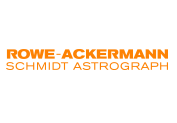
In the 1960s, Celestron’s founder, Tom Johnson, created groundbreaking new telescopes never before seen on the consumer market. Today, our world-class team of optical and electronic engineers continues to push the boundaries of technology. From the SkyProdigy, a telescope so smart it can align itself, to our high-performance EdgeHD optical system, we’ve revolutionized the hobby of astronomy for beginners and advanced amateurs alike. Go behind the scenes with Celestron’s product development team and learn more about our award-winning and patented innovations.

At the forefront of a new era in amateur astronomy, the launch of Celestron Origin stands as a beacon, seamlessly intertwining stargazing and astrophotography into a singular, user-friendly experience. This intelligent, all-in-one observatory and astroimaging system emerges as a catalyst, eliminating the complexities traditionally associated with telescopes and, in turn, metamorphosing your backyard into an inviting gateway to the Universe.

Celestron released the patented Rowe-Ackermann Schmidt Astrograph (RASA) 11” optical tube in 2014. Unlike traditional telescopes, the RASA design ingeniously places the imaging sensor at the front of the telescope tube, creating an ultra-fast f/2.2 system with an extraordinarily wide field of view.
Sky recognition technology that has revolutionized the manual telescope by eliminating the confusion common among beginners and enhancing the user experience for even seasoned telescope users.
U nleash the full pointing accuracy of your Celestron computerized telescope with a specialized telescope control software suite. control and Sky Viewer display makes selecting your target easy. CPWI has an extensive object database, employs PointXP mount modeling, and more.
The new Lithium Phosphate (LiFePO4) battery chemistry has significant advantages over other battery chemistries, great for for those Astronomers on the go.
WiFi technology encircles the globe in a web of connectivity, knowledge, and information. Now, Celestron is using that same technology to allow star gazers to connect to the night sky and enhance their experience of the cosmos in fun and unique ways.
Planetarium software package which provides easy-to-understand explanations and impressive visuals of all kinds. Learn more about extra solar planets imagery, 3D Star rendering, observation planning, telescope control, multiple-panel printing, and much more.
Celestron’s aplanatic EdgeHD optics revolutionized astroimaging. This award-winning optical system reduces visual defects like field curvature and coma, creating an ultra-flat field for pinpoint stars all the way to the edge of today’s largest imaging sensors.

Fastar Technology allows imagers the option of drastically increasing the speed and sensitivity of their Celestron optical tube, allowing bright, detailed images with short exposures.

Our patented SkyAlign alignment technology makes setting up a computerized telescope simple, fast, and accurate. Just point the telescope at any three bright objects—stars, bright planets, or even the Moon—and your telescope can orient itself with the night sky.

Celestron’s patented StarSense® Technology makes it easier than ever to locate objects in the night sky, even if you’ve never used a telescope before. Turn it on and push ‘Align.’ In about three minutes, you’re ready to observe!
Get ready for a night of astroimaging with your mount faster than previously thought possible with All-Star Polar Alignment. This innovative software solves the time-consuming problem of trying to pinpoint the North Celestial Pole.
One of the most important factors in a telescope is its transmission—the percentage of light that reaches the focal plane. Our proprietary StarBright XLT optical coatings dramatically increase transmission, up to 97.4% on our Schmidt corrector lenses.

ED stands for "extra-low dispersion," which refers to the composition and optical properties of the glass used for the lenses. ED glass is specially formulated and contains rare-earth compounds that greatly reduce a visual defect called chromatic aberration.
This telescope control software replaces the hand control and allows the user to remotely control their Celestron computerized telescope from their personal PC or laptop.
EclipSmart solar products feature Solar Safe filter technology providing the ultimate protection from harmful solar radiation, including both IR and UV light, and filters 99.999% of visible light. Celestron Solar Safe filter technology is GUARANTEED SAFE for direct solar observation and has been independently tested by SAI Global Assurance Services.
Includes These Celestron Technologies
The Celestron StarSense Autoguider is an all-in-one solution that makes using your telescope easier and more rewarding than ever. This powerful, compact device connects to your Celestron mount to enhance its pointing accuracy and help you create sharp, long-exposure images with ease. Whether you’re an experienced astroimager or just starting in the hobby, adding this game-changing accessory will ensure you have more quality time under the stars.
Automatic Alignment: Be Ready to Observe in Minutes
StarSense Autoguider aligns your telescope to the night sky in about three minutes with the press of a button—no user input is needed. Celestron’s patented StarSense technology “sees” star patterns overhead and matches them to its internal database to automatically orient the telescope. This feature eliminates the hassle of manually aligning your telescope, so you can focus on what’s important—observing and imaging.
Precise GoTo: Supercharge Your Pointing Accuracy
Celestron’s computerized mounts are already hailed for their pointing accuracy, but your mount gets even better when you add the StarSense Autoguider. Instead of placing celestial objects within the telescope’s field of view, Precise GoTo places them in the center of the field—even if you’re using a high-powered eyepiece or today’s small imaging sensors.
Autoguiding: Create Your Celestial Masterpiece
Capturing images of astronomical objects is one of the most exciting things you can do with your telescope. But to capture stunning deep-sky astroimages, you need autoguiding—the power to make tiny adjustments to the mount’s tracking to keep your target locked in over long exposures. Previous autoguiding setups were complex and expensive, usually involving a separate autoguiding camera, a guidescope, and a computer. StarSense Autoguider replaces all that—so even beginners can dive head-first into the world of imaging. Your targets are crisp and detailed, while background stars look like sharp pinpoints, never oblong or streaky.
Assisted Polar Alignment: Dial in the Best Alignment Possible
Many users find that adding StarSense Autoguider to their setup improves accuracy so dramatically that they no longer need to polar align their German equatorial mounts for most casual observing and imaging.
But if you want to achieve the best accuracy possible, the autoguider dramatically simplifies the polar alignment process. Simply follow the on-screen instructions on the hand control or in the CPWI software, and you can complete a full polar alignment in less than five minutes.
High-quality 4-element Optical Design
The StarSense Autoguider features a high-quality 4-element optical design devised by the famed optical designer Mark Ackermann. Its unique design delivers sharper images than other mini-guidescopes. The optical tube is threaded to accept 2” astronomical filters. Add an IR-pass filter to align your mount in twilight or a neutral density filter for daytime focusing.
The device also includes an onboard computer and a highly sensitive Sony IMX290-DLL monochrome CMOS image sensor, all working together to provide exceptional guiding accuracy. You can view a live image from the camera via your PC if desired.
Advanced options
Advanced users will love fine-tuning their autoguiding setup via CPWI’s advanced settings. You can enable dithering options to move the mount slightly between camera sub-exposures, which may help your image processing software perform at its best.
You can also guide on a comet via CPWI. Simply select the comet from the software’s regularly updated database of more than 100,000 celestial objects. Guiding directly on the comet will produce better results than guiding on nearby stars.
Best of all, you can unlock more exciting features like these throughout the lifetime of your StarSense Autoguider. Your purchase grants you access to all subsequent firmware updates. Celestron engineers are constantly adding new functionality to our products, and with a simple firmware update, you’ll always be able to enjoy the latest and greatest.
Works with your current setup
You choose how you want to control your StarSense Autoguider. It works with your NexStar+ hand control, CPWI telescope control software via a wired PC connection or WiFi (with a WiFi-enabled mount or the SkyPortal WiFi Module accessory). The autoguider also works with the rest of your Celestron accessories for a seamless solution that fits in perfectly with your telescope setup.
StarSense Autoguider works with most current Celestron computerized mounts, both German equatorial and altazimuth. See the chart below for full compatibility details.
WARNING: DO NOT PLUG THE STARSENSE AUTOGUIDER INTO YOUR MOUNT’S AUTOGUIDER PORT! The StarSense Autoguider connects to one of your mount’s AUX ports, connecting it to the Autoguider port can damage the StarSense Autoguider.
| Compatible | |
|---|---|
| Advanced VX | CGX-L |
| CPC, CPC DX | NexStar Evolution |
| NexStar SE Series | CGEM II |
| CGX | CGEM / CGEM DX |
| CGE Pro | |
| Not Compatible | |
|---|---|
| NexStar SLT | Astro Fi |
| SkyProdigy | LCM series |